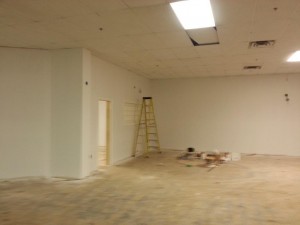It’s quite amazing how fast technology moves! It seems like yesterday that we were watching TV on a cathode ray clunker in the corner of the living room and wondering how to stop that VCR to stop blinking “12:00”, nowadays just blink and the tech changes!
A move from that old technology into the new digital age is going to mean a wholesale change in your system, but by making some strategic choices in your new electronics you can help to future proof (to a certain extent) your system.
Rule #1: Buy the best technology you can afford. Low cost, budget brands are everywhere, and the old adage “you get what you pay for” is truer today than it ever was. Better quality means greater longevity, both in build quality and more importantly in technological aging.
Some of the most dramatic changes have been it the cabling method that is used to connect a TV to a source device. For example:, antennae used to be the way you got a TV station (anyone remember “rabbit ears”?), then we had VCR’s, that used a coaxial cable connection between the TV and the VCR, until stereo came out and that required a video and a stereo audio RCA type connection on the TV and the VCR, VCR’s got better picture with Super VHS and Beta requiring a new type of connection for the picture called S-Video. All of theses changes took about 60 years to transpire… and then things went DIGITAL! The first digital devices used analog connections to the TV, three of them to be precise to transmit the picture to the TV (Y,Pb,Pr) this upped the resolution to the ability to show 1080 horizontal lines of resolution compared to 520 lines for S-video and a measly 200 lines for a coaxial connection. Again a new type of connector that had to be on both the TV and the source device in order to see the better quality was required. This was a very short lifespan as far as connections are concerned (about 5 years) but it paved the way for the first truly digital connection for consumer electronics called HDMI (High Definition Multimedia Interface) now not only was the picture sent over a cable digitally but the audio also was carried on the same cable digitally. A dramatic reduction in the spaghetti mess of wires behind the electronics! But we are not done yet… in very short order the abilities of the HDMI system were upgraded from HDMI 1.0, 1.2, 1.3, 1.4, 1.4A, all the way up to the latest standard called HDMI 2.0! With this new performance standard the industry is ready for a new resolution standard called UHD (Ultra High Definition). Again a change in television and source devices is going to be required to see these changes which include approximately 4X the resolution of HDMI and a dramatic increase in the colour depth of the picture as well as the ability to support 11.2 channel audio…on ONE cable! It won’t be long before this can be sent to the TV without any wires!
Unfortunately, I don’t have a crystal ball to predict the future, but I do know that the innovation and performance of Television in general is not going to stop, but by making the right choices now you will be able to stave off the inevitable obsolescence of the industry considerable longer than if you are buying uninformed of today’s technology!
At Wired 1 we stay up to date with the current and predicted advances in the electronics work so you don’t have to! Contact us today and get ready for the sights and sounds of your life!
Related Images:



















